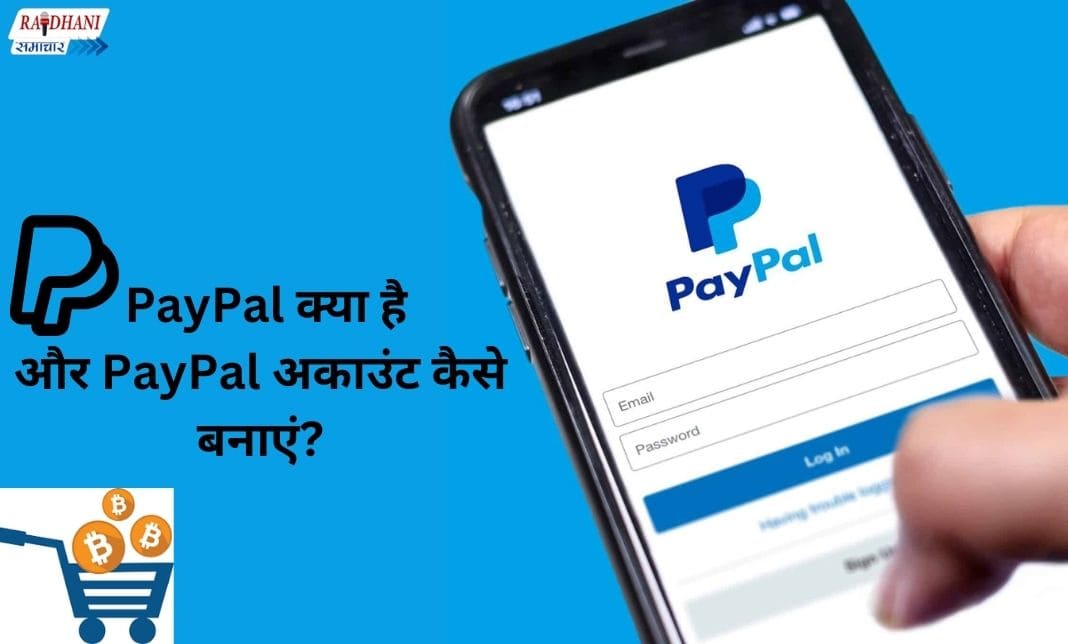You must know two important aspects of SEO strategy if you want to increase organic traffic to your website in case link building services:
- Relevancy
- Relevancy Authority
Understanding what your audience is looking for and producing the best, most relevant content are the keys to ensuring that Google will naturally serve it to them.
However, this is not a precise science.
It’s a competitive market, so even if you produce the finest content possible from your perspective, Google will still rank your webpages on the SERPs based on a variety of other variables. One of them is the level of authority (or reliability) of the content’s creator.
You might believe that “authority” is a relative concept, but Google has a crucial metric for determining it: backlinks.
However, this is not a precise science.
Backlink- An external link pointing to your website is known as a backlink. All visual connections that point to a separate website count as backlinks, whether they are embedded in text, on an image, or as a button. As they are one of the most crucial ranking elements for all of the major search engines, backlinks are crucial in SEO.
Why do backlinks matter?
Links from other websites rank among the top search ranking factors. This is due to the fact that a connection to another site is more than a simple hyperlink; it also functions as a suggestion and a means for publishers to convey to their readers or users: “I have faith or trust in this source.”
It’s really difficult to get that kind of support, especially for new or small businesses. To increase your SEO performance, though, you must ensure that your site consistently gains high-quality backlinks quicker and more effectively than your competitors.
“A link-building service sstrategy does more than increase your SEO ranking as well as Google exposure. Backlinks can show the connection between two websites and how each is working to promote the growth of the other.”
High-Quality Backlinks
It only makes sense to assess the credibility of a backlink if you view it as a vote of trust.
In the previously, black-hat SEOs could use tactics like link farms, PBNs, and comment spam to develop sizable backlink profiles and successfully game the system. Black-hat link-building strategies are no longer effective. Too many “unnatural or Spammy” links can result in a penalty for your website.
In other words, whenever it comes to backlinks, both quantity and quality are important.
Getting high-quality backlinks are hard. You should seek out links that:
Authoritative –
The website receives a lot of traffic, has a strong backlink profile (many endorsements), and even performs well in the SERPs.
Relevant –
The referring page addresses a related subject or industry. e.g. If a blog entry on “How to transfer data from android to iPhone” links to the homepage of your Food page, this is not considered to be a relevant or high-quality backlink.
Unique –
If the website mentions you but not your rivals, you will gain an advantage.
Natural –
The leading page has an average number of links on it, as well as the link is not sponsored. Neither is the anchor text branded / spammy.
How to get Backlinks
- Take Back Unlinked Mentions
- Contextual Links Obtain
- Receive mentions on “Best X” lists
- Make Yourself Available to Other Publishers
- Speak with journalists
- Refresh dated content and create free tools
- Release Ultimate Manuals
- Use pictures to get mentions and links.
- Use directories (directories, of course)
- Make use of the broken link
Take Back Unlinked Mentions
The quickest and most simple method to create high-quality backlinks is undoubtedly reclaiming unlinked brand mentions.
All you have to do is pay attention to who is discussing your business in the news or on blogs. Google Alerts, which is straightforward and free, can be used to accomplish that. Use tools like BuzzSumo, Ahrefs Content Explorer, or Mention to gain more information into your mentions, such as the amount of shares or the DA of the site where the mention originated.
When someone mentions your company, a product, or a service, you’ll frequently find that the author hasn’t provided a link to your website. At that point, you can quickly contact them and request accurate link attribution. By enabling readers to click over and learn more concerning the brand highlighted, this also enables the publisher to provide its readers with a better experience.
The inventive aspect of this methodology is that you may apply the same technique to regain connections for other brand-related mentions, such as events you host, staff members’ names, study findings, etc.
The creative feature of this approach is that you can use it to establish links for brand-related discussions of other things, such activities you host, staff members’ names, research findings, etc.
Contextual Links Obtain
Have you ever noticed how some articles include links to extra resources, either as text recommendations or as sections marked “Read more”?
Contextual links are the names given to these links that are included in an article’s text.
The secret to obtaining contextual links is to identify the ideal link possibility to get in touch with. You can locate them by looking up articles that are comparable to the material you’re promoting and contain a “Read more” section.
For example, suppose you have a recent study on email marketing. Consider browsing for articles that discuss marketing trends and provide links to other publications.
Through search engines like Google, try the following to locate them:
| marketing trends inurl:blog intext: | ”Read more” |
| marketing trends inurl:blog intext: | ”Recommended articles” |
| marketing trends inurl:blog intext: | ”Recommended reading” |
Don’t forget to explain why your study deserves to be featured when you contact the author to pitch it. A convincing boilerplate and a tailored email can help a lot.
Theard adds that after you develop the habit of obtaining backlinks, you can find that other publishers approach you directly. When you use the proper relationship-building techniques, publishers approach you rather than you approaching them.
Don’t forget to explain why your study deserves to be featured when you contact the author to pitch it. A convincing boilerplate and a tailored email can help a lot.
Theard adds that after you develop the habit of obtaining backlinks, you can find that other publishers approach you directly. When you use the proper relationship-building techniques, publishers approach you rather than you approaching them.
“Backlinks are simple link exchanges. A backlink for the sake of a backlink is not a good backlink; Google can and will detect whimsical backlink articles. Google will accept a relationship-based backlink if it contains relevant keywords, trustworthy websites, and a sincere effort to establish high-quality website referrals.”
Receive mentions on “Best X” lists
Consumers of nowadays research all of their options before making a purchase. To find out what other people suggest, they frequently visit comparison websites or articles, such as “The 13 Best Free Email Marketing.”
Utilize a keyword research tool and look up monthly search volume to get an idea of how well-liked these Best X articles are in your sector. For instance, the term “best CRM for small businesses” receives over 3,400 searches per month.
A great method to strengthen your brand, encourage more people to try out your product, and, of course, gain high-quality backlinks is to be featured on publications that rank the top items, such as the one you sell.
Make Yourself Available to Other Publishers
By utilising your expertise and noteworthy facts, you can assist other bloggers and journalists.
Every time someone quotes you, you’ll receive a backlink. But in addition to getting backlinks with high DA, this tactic offers other benefits. You’ll get a backlink for each time someone quotes you. But this strategy has other advantages besides just obtaining backlinks with high domain authority (although they are a huge benefit on their own). You’ll boost your brand awareness and attract referral traffic to your website by establishing yourself as a reliable source.
Speak with journalists
Journalists and bloggers receive a tonne of emails pitching them content that is overly promotional and doesn’t benefit their readers. Because of this, a lot of outreach emails go unanswered.
There are, nevertheless, effective ways to distinguish your pitch. Co-founder of Aira Paddy Moogan outlines how his team successfully employs this technique to obtain high-quality backlinks for their customers:
We ask a person from a client company—typically the CEO, managing director, or founder, though anybody can participate—to give us their thoughts on a variety of issues.
Refresh dated content
Check the number of backlinks the post or study report has if you come across something that hasn’t been updated in a while. You’ve identified a real gem if numerous publications use that information as a reference.
You can just go ahead and put more pertinent information in a superior, brand-new piece.
Once the content is available, you can contact bloggers and journalists who have linked to the outdated version to inform them of the new version.
Create Free Tools
An efficient way to gain links and even generate new leads is by producing free resources like calculators or template generators.
Here’s a quick summary of how to get going:
Start by conducting a keyword search to discover what information is returned for “templates,” “tools,” or “generator” in your sector.
Look at the top 10 search engine results for those keywords to see what tools are listed.
Find out which generator or tool is now receiving the most backlinks.
Build a similar product, but much better—better designed, with more adjustable options, etc.
Release Ultimate Manuals
These Ultimate Guides draw inbound hyperlinks since they make it easier for bloggers and journalists to cite an idea they discuss.
If someone creates an article called “How to Get Started with SEO,” for instance, they can concentrate on a few strategies without going into great detail on what SEO is; rather, they can just include a link to an SEO Ultimate Guide in case their readers have any additional questions.
Use pictures to get mentions and links.
An infographic is arguably the most common type of visual content used to gain backlinks. It is always a good option to experiment with them if you haven’t already.
However, if you feel that infographics don’t work well for your company, here are a few additional pictures you may consider creating:
- Graphs and charts using real data
- Graphs that visually communicate complicated ideas
- One-page models
- Free photo galleries that everyone can access
Use directories (directories, of course)
Contrary to popular belief, directories are still around. In fact, they are most likely among the finest techniques to boost local SEO and make it easier for clients to find your company.
Of course, I’m not referring about shady directories that exist solely to generate links. The likelihood of such hurting your SEO performance is higher than anything else.
The directories that people actually use, such as Google My Business, Yelp, and TripAdvisor, are the ones you need to be included on. There are several general and specialist directories in addition to these well-known ones that can boost your rankings and traffic.
Make use of the broken link technique
By contacting a website that contains a broken outbound link (a link to an external source), you can ask them to replace it with a link to one of your pages. It only makes sense to replace the broken link from yours if your page is a reliable resource on the subject to which they were previously connecting.
This strategy works so well because it offers the webmasters a tonne of value by assisting them in fixing a problem with their website and enhancing the user experience for their viewers.
Of course, the problem with this method is finding these broken links.
You have a few options to think about in this case:
You can look for websites that have links that are broken, then utilise the tools on your website to suggest suitable substitutes.
Build a better, more relevant version of the article or offer, find one dead page (404) that used to get lots of links, and then get in touch with the people that linked to the original item.














